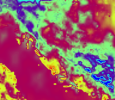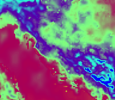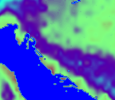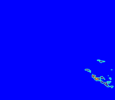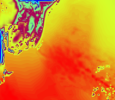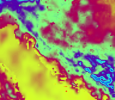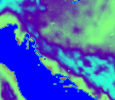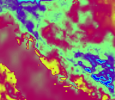meteoadriatic
Member
Problem Description: WRF v4.3+ with NOAH-MP LSM produces widespread unrealistic surface temperature cold pools (5-8K below surroundings) that do not appear in v4.2 using identical configuration and initial conditions (as already others found to be the case - see here). The cold pools correlate with areas of snow cover, including trace snow cover (<1mm snow water equivalent).
This is already reported several times, for example here, here, here and especially already mentioned thread. I made some research and want to report my findings, as I think this is important to resolve.
Key Findings:
Diagnostic evidence at affected example gridpoint:
TG (surface) = 280K
STC(1) (top soil) = 276K ← coldest layer - impossible
STC(2) (deeper) = 279K
Please investigate. It's not just "slower warming", compared to v4.2 (or NOAH!), it's fundamentally broken physics creating impossible temperature gradients.
I can provide assistance as much as possible, but alone was not able to find good solution.
Workaround only: reduce CBIOM in MPTABLE to 0.002 (seems to be correct value instead of 0.02), gets better, but does not resolve the issue completely.
Thank you,
Ivan
This is already reported several times, for example here, here, here and especially already mentioned thread. I made some research and want to report my findings, as I think this is important to resolve.
Key Findings:
- Version comparison confirms regression:
- v4.2.2: Trace snow melts by mid-morning; surface temperatures reach 282-285K at noon; spatially smooth temperature fields
- v4.7: Trace snow persists through noon; surface temperatures stuck at 275-278K; distinct cold pool patterns remain
- Bare soil test isolates vegetation coupling:
- Setting VEGFRA=0 in wrfinput eliminates cold pools in v4.7
- Problem seem to be specific to vegetated grid points
- Suggests issue in vegetation-ground heat flux coupling with (trace?) snow
Diagnostic evidence at affected example gridpoint:
- SNEQV persists at 0.75mm through noon in v4.7 (vs 0.0mm in v4.2.2), in sunny autumn day
- Ground heat flux under vegetation (GHV) up to 100 W/m² and more into cold soil
- STC(1) stuck up to 5K or even more below surface temperature
- Extremely slow surface warming rate 0.12 K/hour (less than half the rate of bare soil)
TG (surface) = 280K
STC(1) (top soil) = 276K ← coldest layer - impossible
STC(2) (deeper) = 279K
Please investigate. It's not just "slower warming", compared to v4.2 (or NOAH!), it's fundamentally broken physics creating impossible temperature gradients.
I can provide assistance as much as possible, but alone was not able to find good solution.
Workaround only: reduce CBIOM in MPTABLE to 0.002 (seems to be correct value instead of 0.02), gets better, but does not resolve the issue completely.
Thank you,
Ivan

